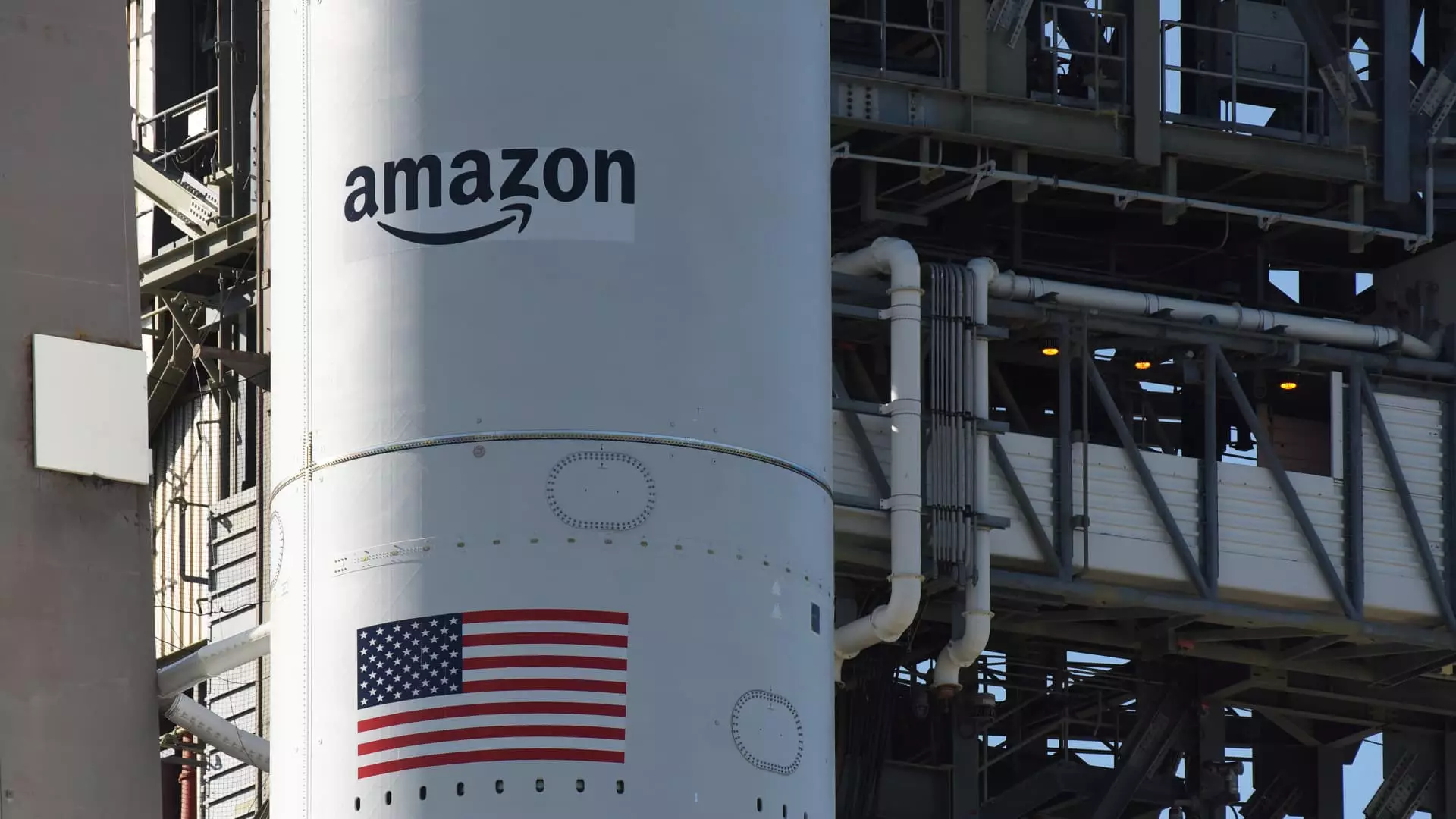In the ever-evolving landscape of space technology, setbacks are part of the journey, but when poor weather stalls a much-anticipated launch, it serves as a stark reminder of the unpredictable nature of the cosmos. Amazon’s recent announcement to delay the launch of its Kuiper internet satellites due to inclement weather conditions perfectly encapsulates this reality. The United Launch Alliance (ULA) was poised to send 27 Kuiper satellites into low Earth orbit from Cape Canaveral, Florida, but “stubborn cumulus clouds” and unruly winds thwarted the launch. The communication from ULA, declaring the weather forecast a definitive “NO GO,” emphasized the challenges that companies like Amazon face as they endeavor to decode the complexities of both technology and nature.
Amazon’s Vision: High-Speed Internet in the Skies
Amazon’s ambition to establish a constellation of satellites to provide high-speed, low-latency internet access touches upon a fundamental need in today’s digital world. This initiative, launched six years ago, is not merely a venture into the realm of space exploration. It represents a strategic maneuver aimed at disputing the market dominance established by SpaceX’s Starlink. By positioning its square-shaped terminals for consumers, corporations, and government entities, Amazon is not just selling connectivity; it is reshaping how we perceive internet access, particularly in remote or under-served areas.
The Race Against Time: Meeting Regulatory Milestones
However, time is of the essence. Amazon faces an impending deadline set by the Federal Communications Commission (FCC) that compels it to have at least 1,618 satellites operational by July 2026. This looming requirement adds a layer of urgency to Amazon’s endeavors. While theoretical frameworks and satellite designs are crucial, the tangible aspect of launching these satellites is equally critical. The recent weather interruption is not a minor glitch; it signifies the stringent demands of project timelines against the backdrop of nature’s unpredictability.
Competitive Pressures: The Shadow of SpaceX
Meanwhile, the competition remains fierce. SpaceX, equipped with an established fleet of 8,000 satellites and an unpredictable CEO, Elon Musk, has already secured its position as a titan in the satellite internet sector. Musk’s dual role as a leading entrepreneur and a governmental advisor intriguingly intertwines private enterprise with federal operations, which could provide him with a strategic advantage. This synergy propels SpaceX’s initiatives at an accelerated pace while casting a long shadow on emerging players like Amazon.
Anticipation of Future Launches
As the aftermath of the weather delay unfolds, Amazon is feverishly preparing for its next opportunity to launch. The company’s readiness to ramp up production and deployment rates post-launch indicates a healthy ambition toward asserting itself on the internet satellite stage. The evolution of the Kuiper project may yet unfold, but first, Amazon must grapple with the unpredictable forces of nature that continue to shape the future of space exploration. The anticipation surrounding these future missions underscores the excitement and tension inherently tied to the burgeoning space economy.

